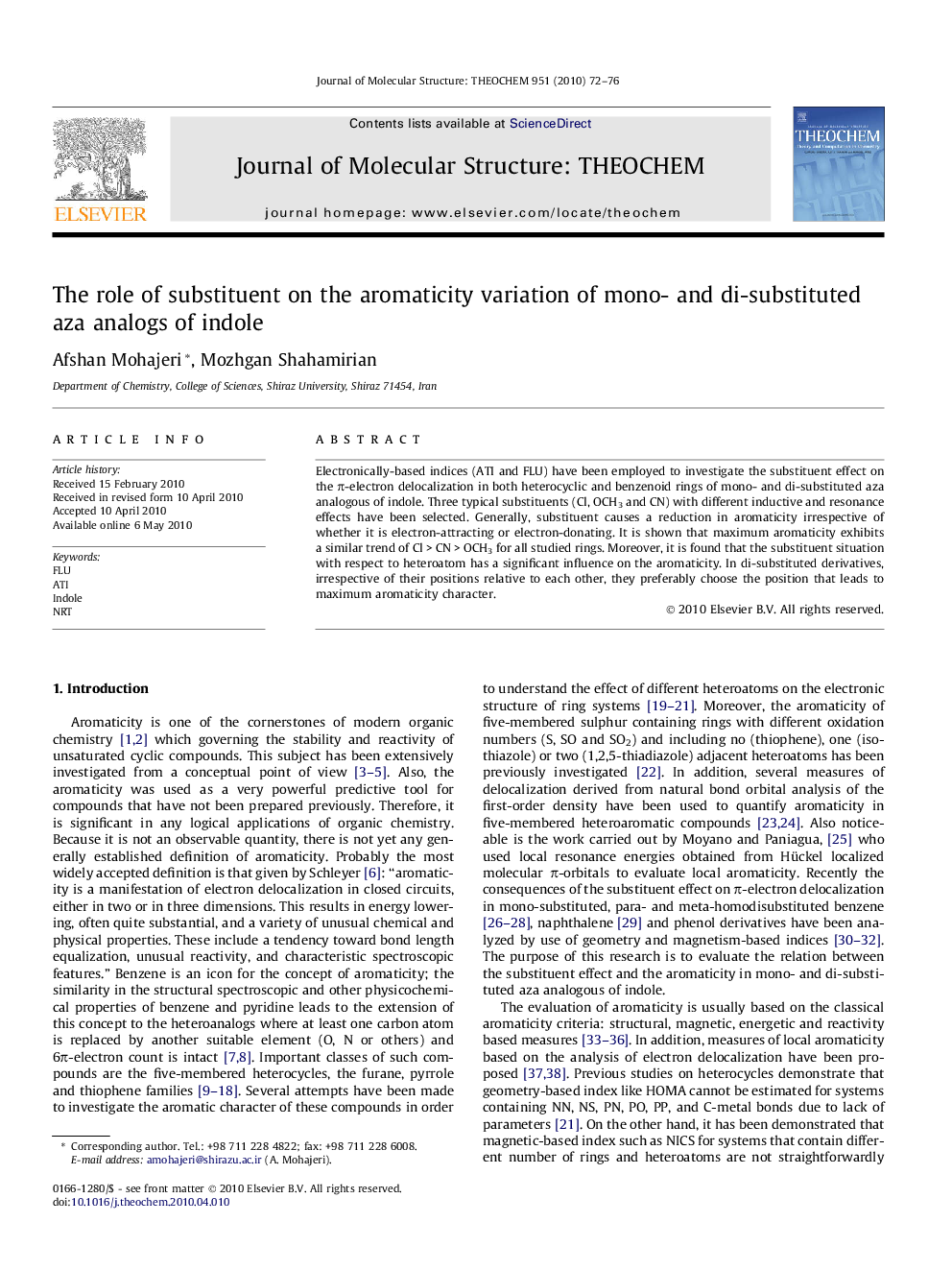| Article ID | Journal | Published Year | Pages | File Type |
|---|---|---|---|---|
| 5416401 | Journal of Molecular Structure: THEOCHEM | 2010 | 5 Pages |
Abstract
Electronically-based indices (ATI and FLU) have been employed to investigate the substituent effect on the Ï-electron delocalization in both heterocyclic and benzenoid rings of mono- and di-substituted aza analogous of indole. Three typical substituents (Cl, OCH3 and CN) with different inductive and resonance effects have been selected. Generally, substituent causes a reduction in aromaticity irrespective of whether it is electron-attracting or electron-donating. It is shown that maximum aromaticity exhibits a similar trend of Cl > CN > OCH3 for all studied rings. Moreover, it is found that the substituent situation with respect to heteroatom has a significant influence on the aromaticity. In di-substituted derivatives, irrespective of their positions relative to each other, they preferably choose the position that leads to maximum aromaticity character.
Related Topics
Physical Sciences and Engineering
Chemistry
Physical and Theoretical Chemistry
Authors
Afshan Mohajeri, Mozhgan Shahamirian,
